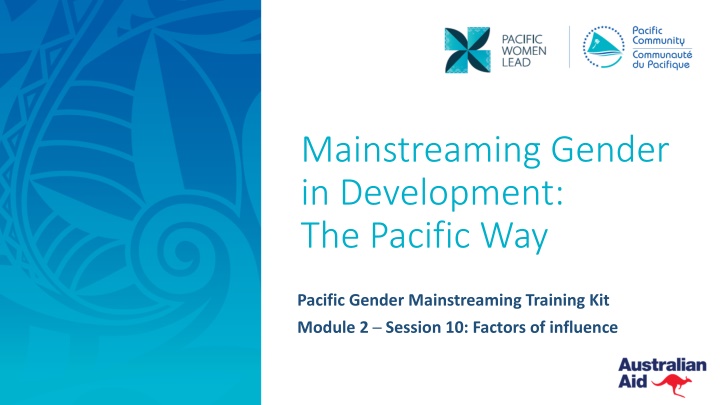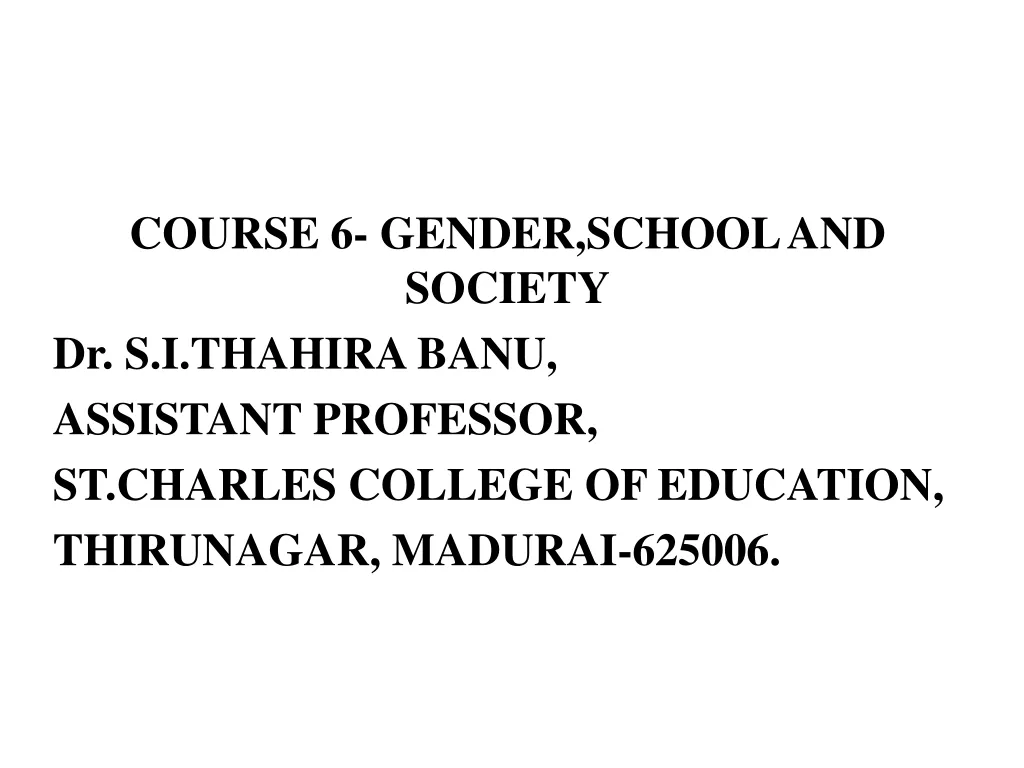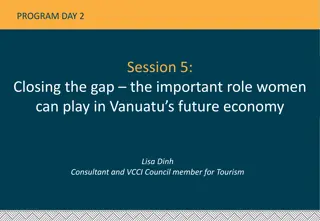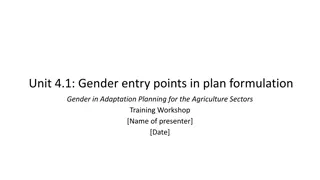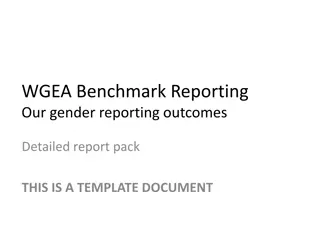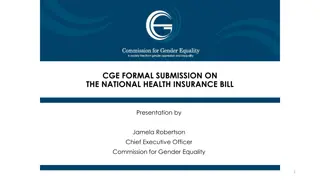Factors of Influence Towards Gender Equality in a Changing World
We live in a dynamic world where gender roles, relations, and issues constantly evolve. Factors of influence, both positive and negative, shape progress towards gender equality. Examples range from government representation to educational access, reflecting societal shifts affecting gender dynamics.
Download Presentation

Please find below an Image/Link to download the presentation.
The content on the website is provided AS IS for your information and personal use only. It may not be sold, licensed, or shared on other websites without obtaining consent from the author.If you encounter any issues during the download, it is possible that the publisher has removed the file from their server.
You are allowed to download the files provided on this website for personal or commercial use, subject to the condition that they are used lawfully. All files are the property of their respective owners.
The content on the website is provided AS IS for your information and personal use only. It may not be sold, licensed, or shared on other websites without obtaining consent from the author.
E N D
Presentation Transcript
Mainstreaming Gender in Development: The Pacific Way Pacific Gender Mainstreaming Training Kit Module 2 Session 10: Factors of influence
Learning outcomes Learning outcomes At the end of this session you will understand: the factors that influence progress towards gender equality.
Factors of influence Factors of influence We live in a changing world! Gender roles and relations change. Gender issues change: old ones have been transformed or reduced; new ones emerge. Previously acceptable behaviours are rejected today. New situations condemned by elders could be acceptable for youth.
Examples of factors of influence Examples of factors of influence Factors Examples The presence of women in the government Conflict Political Exclusion of women in leadership positions in customary institutions Matrilineal system The young generation is educated Increased number of girls accessing higher level of education. Natural disasters Climate change impacts Cultural Educational Environmental
Factors Examples Laws against domestic violence Laws promoting women s right to own land Legislative Greater access to employment for women; Poverty A new market place Globalisation; Development partners promoting gender equality through their interventions War The idea that a man is the head of the household and that women must obey their husbands Strong religious communities supporting each other Economic International Religious
Factors Examples Migration Youth representing a larger proportion of the population Demographic Improved maritime transport between islands Improved infrastructure for drinking water and sanitation Infrastructure Increase of non-communicable diseases Health Television transmits new ideas Mobile phones improve communication and are accessible to more people Technology
Factors of influence Factors of influence People are factors of influence Factors of influence can be positive or negative o Some contribute to gender equality o Others increase gender inequalities A good understanding of the factors of influence helps us to develop better strategies to address gender inequalities issues adapted to the context.
Evaluation questions Evaluation questions 1. Describe two negative factors of influence that affect or have affected gender equality in the Pacific. 2. Describe two positive factors of influence that contribute or have contributed to gender equality in the Pacific.
Evaluation question Evaluation question 1. What factor below would have no gendered impacts? a) COVID-19 b) Mobile phones c) A disability policy d) Ocean acidification
